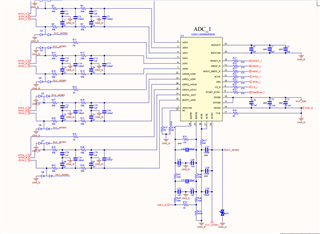Tool/software:
Hello Team
I am currently working with the ADS114S08 in a circuit designed to measure temperature using a 4-wire RTD configuration. Our system is set up to handle 4 channels of the ADC, and we are experiencing some issues when no RTD sensor is connected to the respective input channels.
When the RTD sensors are not connected, the input channels are floating, and we have observed unpredictable and fluctuating ADC readings between 8000h and 7FFFh. As described in the ADS114S08 datasheet, these values are likely the result of stray electromagnetic fields, thermal noise, or other environmental factors affecting the floating inputs.
Given this, we are considering the use of a pull-down resistor to mitigate the noise and stabilize the input channels when no sensor is connected. However, before proceeding, we would like to confirm the following:
Is it advisable to use a pull-down resistor in this configuration, and if so, what resistance value would be recommended?
Where in the circuit would be the most effective location to place this pull-down resistor?
Are there any other recommended best practices or design techniques to minimize the random ADC readings caused by noise when no RTD sensor is connected?
We would appreciate any guidance or recommendations you could provide on how to address this issue and improve the stability of our measurements.
Thank you in advance for your support. I look forward to your expert advice.
Best Regards
Prashant Gautam


